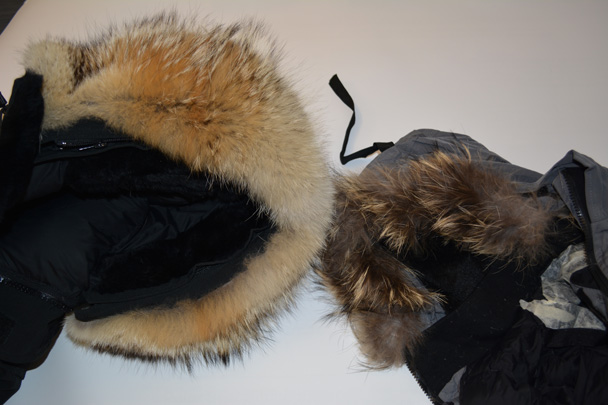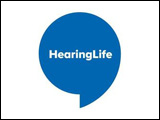The holiday season has consumers pulling out their wallets and looking for a good deal, but the RCMP are reminding consumers to be wary of buying counterfeit merchandise.

Left to right, authentic Canada Goose fur trim and counterfeit coat fur trim.
Purchasing a counterfeit product could put yourself and your family in danger, as these products are not tested and do not meet any safety standards.
“I have seen counterfeit children’s clothes that have no fire retardant; pharmaceuticals that have no active ingredients; electrical devices, such as cell phones, that have caught fire; and the list goes on,” said Cst. Toni Zoledowski of the RCMP’s Federal Serious and Organized Crime Unit. “There is no way to ensure the products you are using are safe. Yes, you might save a few bucks, but there are huge risks.”
A recent case of a counterfeit product putting the consumer at risk was the RCMP’s seizure of a counterfeit Canada Goose coat. The authentic coats are made with down, which is a layer of fine feathers found under the exterior feathers of birds. The seized coat was not filled with down. The wearer of this coat could venture outdoors with the belief this coat provided protection against extreme winter temperatures. There would be virtually no insulation against the extreme cold and the wearer would be at risk of serious injury or even death.
RCMP Federal Serious and Organized Crime investigators worked with the Assiniboine Park Zoo in Winnipeg to determine what was actually being used as filler in the seized coat. Dr. Stephen Petersen, Head of Conservation and Research at the Zoo, determined it was pieces of Chinese domestic duck feathers, not down, and rather than the North American coyote fur used on the authentic coat, the fur trim on the hood of the seized coat was raccoon dog fur.
“The majority of our research projects at the International Polar Bear Conservation Centre are focused on the genetics of Arctic species. This was a unique situation where we were asked to help the RCMP on a very interesting project,” said Dr. Petersen. “It was a great collaboration that allowed us to use the genetics laboratory at the IPBCC and, at the same time, raises awareness for the public about the products they are purchasing.”
The public and retailers should follow the “Four Ps” that could indicate a product is counterfeit:
- Package: Examine the packaging. Look for spelling variants, shoddy appearance, safety certifications or small differences from the authentic logo
- Price: If it seems too good to be true, it probably is
- Place: Buy from reputable retailers and use extra diligence when purchasing items through the Internet
- Product: Examine the quality and appearance of the product
Dealing in counterfeit products is against the law. Anyone found committing these offences could face criminal penalties, including substantial fines and terms of imprisonment of up to five years. Anyone with information regarding the sale of counterfeit products is asked to call their local RCMP detachment.


